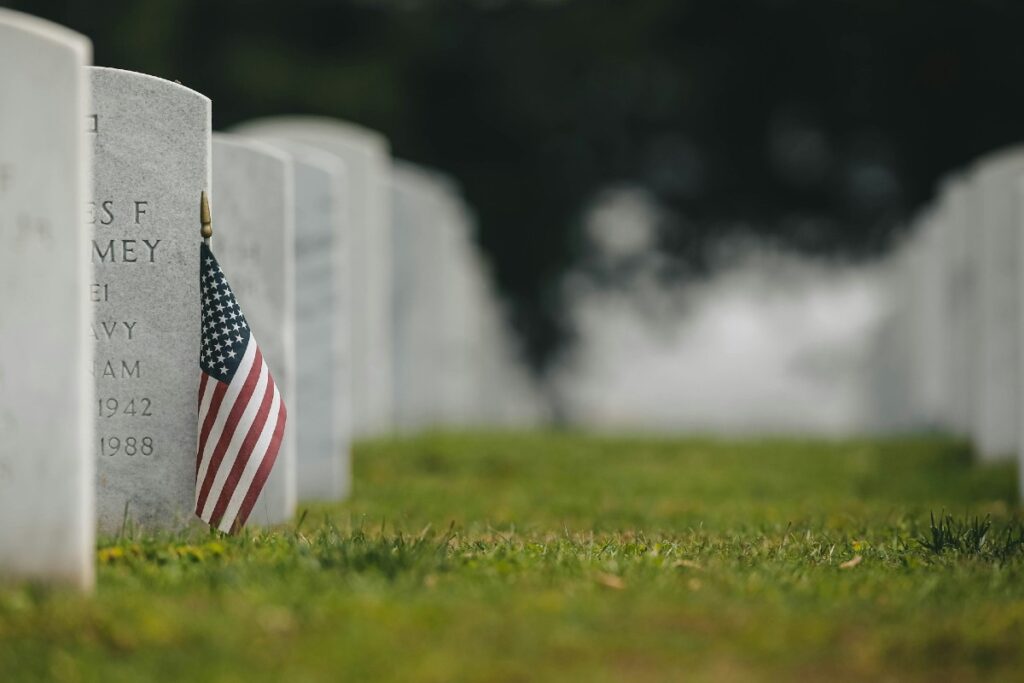By Elliott Brack
Editor and Publisher, GwinnettForum
MAY 31, 2024 | What’s the origin of the holiday we have just observed, Memorial Day? History tells us that it was women in Columbus, Ga. who were the leaders in Americans today observing Memorial Day.
In Columbus in 1866, just a year after the Civil War was over, ladies of the Soldier’s Aid Society decorated the graves in Linwood Cemetery. Elizabeth “Lizzie” Rutherford Ellis told others of a book she had read, about tending to the graves of fallen soldiers. The women of the Society liked the idea, and transformed their group into the Ladies Memorial Association.
The secretary of this group, Mary Ann Williams, wrote a letter to the press on March 11, 1866, seeking assistance in establishing an annual holiday to honor the dead by decorating the graves of soldiers throughout the South. The letter was printed in numerous newspapers. The idea caught on. The Society suggested the date of April 26 for the celebration, the date General Joseph E. Johnson surrendered the remaining Confederate Army to Union General William T. Sherman in North Carolina.
That year, 1868, the holiday was observed in Columbus, Atlanta, Augusta and Macon in Georgia, but also in Montgomery, Memphis, Louisville (Ky.), New Orleans and Jackson (Miss.). Of course, all of these observances were in the South, basically honoring the Southern dead. In the South, it became known as Confederate Memorial Day.
Up north, Gen. John Logan, the head of the Grand Army of the Republican, basically a veteran’s organization of Union soldiers, heard in 1866 of the Southern proposal to recognize the dead. He issued General Order No. 11 for May 30, 1868 to be marked as a holiday, to be observed annually and nationwide, calling it “Decoration Day.”
Many Northern states quickly began observing this holiday in 1868, when there were 183 cemeteries decorated. By a year later, the number of cemeteries observing this day had grown to 336. (Logan’s wife noted that the date was set because it was an optimal date for flowers to be in bloom in the north. Remember, it was not a time when people bought their flowers; most grew their own, so using your own flowers was practical.)
Rutherford died on March 31, 1873, and was buried in Linwood Cemetery, alongside the Confederate soldiers she had sought to memorialize. Her marker, erected by the Lizzie Rutherford Ellis (who came up with decorating cemeteries) Chapter of the Daughters of the Confederacy calls her “Soldiers’ Friend” and observes that she was the person who first suggested Confederate Memorial Day.
In 1874, the year after her death, the Georgia General Assembly officially added a public holiday, “The 26th day of April in each year—commonly known as Memorial Day.” By the end of the century many southern communities were observing the event, and the formation of the Confederated Southern Memorial Association in Louisville, Ky., in May 1900, led to the widespread adoption of Confederate Memorial Day.
While still occasionally celebrated in parts of the South, the holiday has come under increasing scrutiny in recent years as the country reckons with the lasting legacies of slavery and racial inequity. In 2015 Governor Nathan Deal removed Confederate Memorial Day and Robert E. Lee’s birthday from the state’s official holiday calendar.
- Have a comment? Click here to send an email.










Follow Us